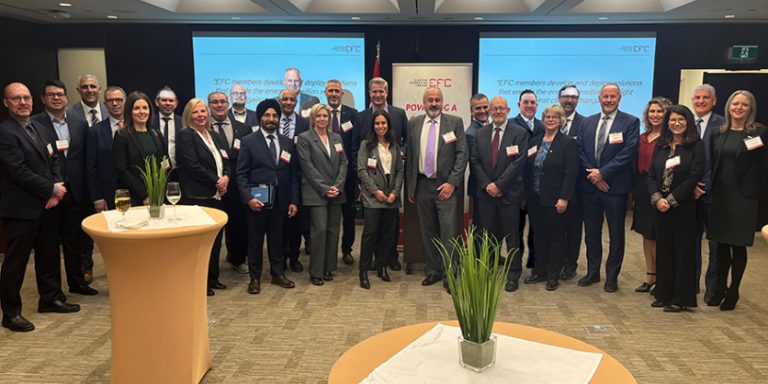Electri-fyi: Exploring Electrification Trends and Opportunities in Canada

June 19, 2019
The Canadian electrical industry is facing a period of dynamic change that is creating a multitude of business challenges and opportunities. Complex and interconnected trends in the economic, technological, social, regulatory and environmental spheres are re-shaping how energy is generated, distributed, sold and used — ushering in an exciting new era of electrification.
This transformation provides opportunities throughout the electrical industry on both the demand and supply side of the equation: from electrified transportation and energy-efficient products, to a more sustainable, reliable and socially conscious energy infrastructure.
Electrification defined
Electrification has been making headlines recently and is a topic of much discussion among electricity producers, manufacturers, suppliers, regulators and analysts. Energy market shifts, evolving consumer expectations, policy changes and greenhouse gas (GHG) emission reduction targets are among the key factors driving greater interest in electricity as a power source.
Any meaningful analysis of electrification and its implications begins with a working definition of the term: Electrification is the process of converting a machine or system to operate using electricity, when it previously used another form of energy, e.g. propane, oil, gas or kinetic.
The transition to electricity offers increased supply grid flexibility and efficiency and is set to revolutionize how energy is used for urban planning, rural development and industrialization. The potential for efficient electrification is significant. Although our nation’s electricity is largely emissions free, only 20% of our energy use comes from electricity. This offers tremendous opportunity for the electrification of end-use applications in residential, commercial, industrial and transportation sectors.
Electrification summit
As part of its continuing mandate to advance Canada’s electrical industry, Electro-Federation Canada (EFC) partnered with the Canadian Electricity Association (CEA) in February 2019 to present the Electri-fyi Summit. Held at the Plug’n Drive Electric Vehicle Discovery Centre in Toronto, the full day event brought experts together to explore various facets of electrification.
Experts from Natural Resources Canada (NRCan), the Independent Electricity System Operator (IESO), Plug’n Drive, Ontario Power Generation (OPG) and ABB Canada presented a range of trends driving the electrification movement, as well as implications for companies that generate and deliver energy — and those who manufacture, distribute, market and sell electrical products that support the widespread distribution and use of power in our society. Summit attendees also had an opportunity to broaden their scope and understanding of electrification, by reviewing four possible future scenarios and exploring associated market demands, regulatory implications and early signposts.
EFC’s whitepaper, Electri-fyi: Exploring Electrification Trends and Opportunities in Canada, builds on discussions from the Electri-fyi Summit, summarizing the event’s key insights, along with additional research to provide an overview of the following aspects of electrification:
• its definition, dimensions and drivers
• energy landscape in Canada and abroad
• its impact on transportation (special focus), residential, commercial and industrial sectors
• business opportunities for electrical industry companies
The main objective of this whitepaper is to provoke reflection on what electrification means for your business: how it will affect your operation; the product and service opportunities that may arise; and how to adapt to stay competitive.

















